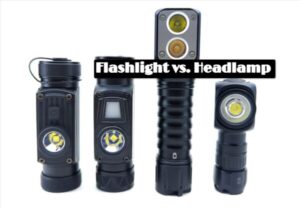Top 6 Things You Didn’t Know About Solar Energy
Did you know almost all ancient civilizations worshipped a sun god or goddess? Helios, Amaterasu, Freyr, Ra, Sol Invictus were some sun deities worshipped by different ancient people. The sun sustains life with its warmth and light. In modern times, solar energy has become easier, cheaper, and more efficient to tap. Solar energy is clean, renewable, and abundant. Here are some interesting facts about solar energy;
#1 The First Solar Panel was Made in 1954
The first photovoltaic cell was made by Bell laboratories in 1954. It was a revolutionary innovation that was said to have ‘a promise to harness the limitless energy from the sun.’ United States space agency NASA was one of the first adopters of solar energy technology. NASA’s oldest satellite the Vanguard 1, which is powered by solar energy, is still orbiting the earth.
The initial solar panels were very expensive, costing around $75 for 1 watt of power production. Since then, solar panel prices have fallen by almost 99%. Today the cost of a photovoltaic cell is around $0.20 for 1 watt of power production.
Since then solar energy has grown to around 3% of world power consumption. Thailand has not been left behind. There were 2,982 Megawatts of solar energy produced in 2019, accounting for 2.3% of total power production in Thailand. Uses such as solar air-conditioning are becoming more common in both residential and commercial premises.
#2 Solar Energy is the Most Abundant Source of Energy
Solar energy is almost limitless. This is because modem solar panels can harness solar energy even under cloud cover. It is estimated that only 1.2% of the Sahara Desert in Africa can provide enough power to power the world for the whole year.
The current world power generation for both renewable and non-renewable energy is 17.3 Terawatts. An area of 43,000 square miles in the Sahara Desert would produce 17.4 terawatts of power, more than enough to power the world annually.
#3 There are Two Types of Solar Power Technology
Panels of photovoltaic cells are the most commonly available in the market. A photovoltaic cell panel converts sunlight into electricity. This electricity is stored in batteries and is then drawn to power appliances such as solar air-con.
Photovoltaic solar panels can be installed in any space that receives sunlight. This could be on open ground, or building rooftops. Modern photovoltaic solar panels can generate electric power even under low light and cloud cover.
Solar power was mainly domestically for lighting. But advanced equipment like a solar cell air conditioner can now tap solar energy directly for the operations. These appliances operate as well as conventional types but with higher energy efficiency.
Concentrated solar power (CSP) technology works by concentrating light in one spot using mirrors. Enough heat is generated in this spot to heat water into steam that turns electric turbines.
CSP technology is less widespread and mainly used in industrial power production. It requires a large open area to place the mirrors. The largest solar power facility is the Ivanpah Solar Power Facility in the US Mojave Desert. It uses CSP technology to generate 392 Megawatts.
#4 Solar Power has Become Cheaper than Fossil Fuel Energy
Industry reports show that solar energy has become cheaper than energy from coal and oil. Unsubsidized solar power costs an average of $0.042 per kWh, while fossil fuel energy costs an average of $0.043-0.078 per kWh.
While the initial costs of installing power, equipment are a bit high, there is a 100% return on investment. Modern solar panels are designed to last over 50 years. During this period, there are no recurring costs unlike the unpredictable costs of fossil fuel energy.
#5 Solar Power Can be Used Anywhere
Advances in design technology have enabled the production of very versatile solar panels. These panels are being fitted on a wide variety of surfaces and equipment where power is needed. You will today find a solar air conditioner in Thailand homes, solar-powered street lights, solar-powered drones, solar-powered phone chargers, and so on.
The biggest advantage of solar power is that it can be deployed as standalone or from a grid. Many homes in remote areas in Thailand install solar panels of different capacities, which work perfectly. In Europe, the US, and China there are solar power farms that supply solar power using power grid lines.
#6 Solar Power is the Fastest-growing Energy Source
In 2010 solar power accounted for 4% of newly installed electricity production. By 2016, this had risen to 39%. The biggest factors in this quick growth are lowered costs and the consciousness for clean energy.
Some of the most valuable companies today are in the solar power industry. A good example is Tesla which was valued at $42 billion in 2019.
There is no doubt that solar power is the energy of the future. From powering your solar air conditioner, to powering giant satellites orbiting the earth, solar power is the future. Massive advantages in low costs, environmental conservation, and sustainability make it the optimal choice.








